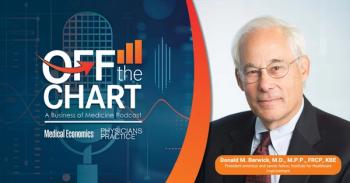
Ensure Your Medical Practice is Successful in Uncertain Times
It’s difficult for medical practices to plan strategically when so much uncertainty surrounds the future of healthcare. Scenario planning can be a useful tool.
In the face of massive uncertainty in healthcare, the default position of many physicians is to maintain the status quo until they can be sure of the ultimate environment.
For some it is a corollary to “do no harm”: Avoid the risk of having bet on a future that never materializes, and do not take any action that could turn out to be maladaptive. In fact, it is a corollary to sticking one's head in the sand. By the time certainty is available, if it ever is, the difference between where the practice is and where it needs to be may not be bridgeable in the time available.
Scenario planning is a strategic planning tool used in industry, and it is particularly useful in times of uncertainty. The planners identify three to four of the most likely environments over the planning horizon. For each environment, they identify the particular attributes that will be necessary to survive and thrive. A matrix with the scenarios across the top and the attributes down the side consolidates the analysis.
Management first attacks the attributes that are critical for survival in one or more of the scenarios. Remaining resources are devoted to the attributes that are important elements of success in the largest number of potential environments. In the example, developing or acquiring Attribute 1 is the highest priority, followed by Attribute 3. The apparent tie between Attributes 2 and 4 is resolved by evaluating the relative probability of Scenarios 1 and 3.
The objective is to set the enterprise up to survive unless something completely unexpected occurs, which means that the entire industry will be blindsided and everyone is scrambling. And if any of the anticipated outcomes occurs, the most important elements of success are already in place.
Consider three scenarios:
Pay for Performance
How will the practice gather the data necessary to document its successes, identify and respond to sub-optimal results, and win over patients as devoted fans?
Increased Patient Volumes and Decreased Reimbursements
How can an already busy practice see more patients and preserve a reasonable quality of life for practitioners and satisfactory level of service for patients? How can the practice determine its incremental costs for additional patients? At what point must the practice incur additional fixed costs? How can it know which procedures are profitable and which, although unprofitable, must be continued? Where are the opportunities to decrease costs, both incremental and fixed?
Sale of the Practice
The critical element is to understand purchasers' objectives and methods of determining value. How much is the practice currently worth? How is that determined? How can it be increased? What are the practitioners' goals?
The analysis process does not necessarily take a great deal of time and resources. Just like exercise, the biggest incremental improvement is between doing something and doing nothing. In half an hour of quiet time, the reasonably well-informed practitioner can identify the most likely scenarios over the foreseeable future and begin to list the responses they will require. The patterns will emerge quickly.
Once the objectives have been identified and prioritized, it is a matter of making things happen. That is admittedly much easier said than done, but a clear target exponentially increases the odds of success.
An ancillary benefit is that the physician is taking some control of his professional destiny, which may be the most effective stress reducer available.
Newsletter
Optimize your practice with the Physicians Practice newsletter, offering management pearls, leadership tips, and business strategies tailored for practice administrators and physicians of any specialty.








